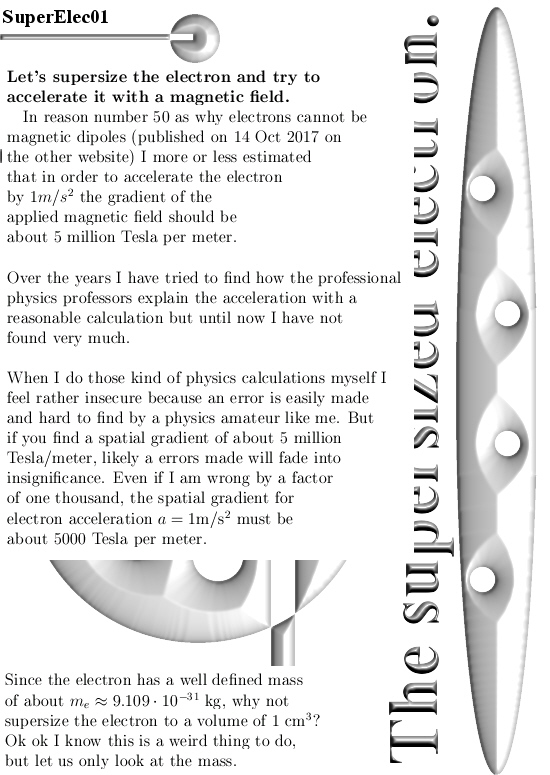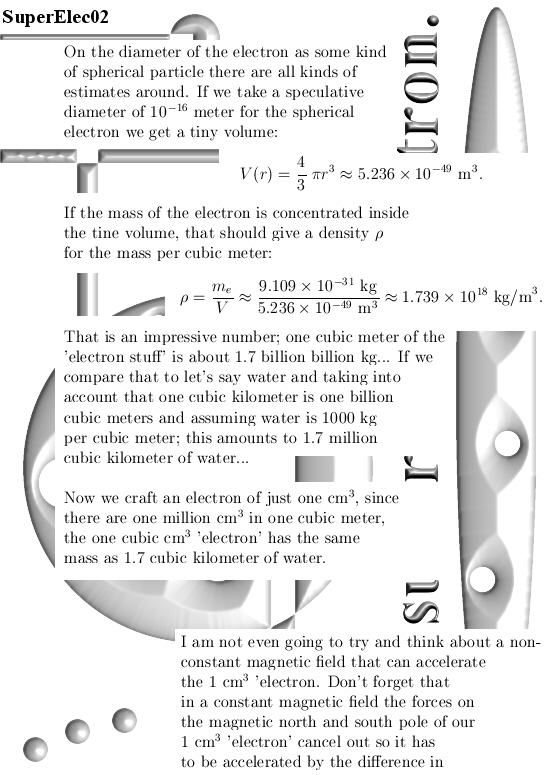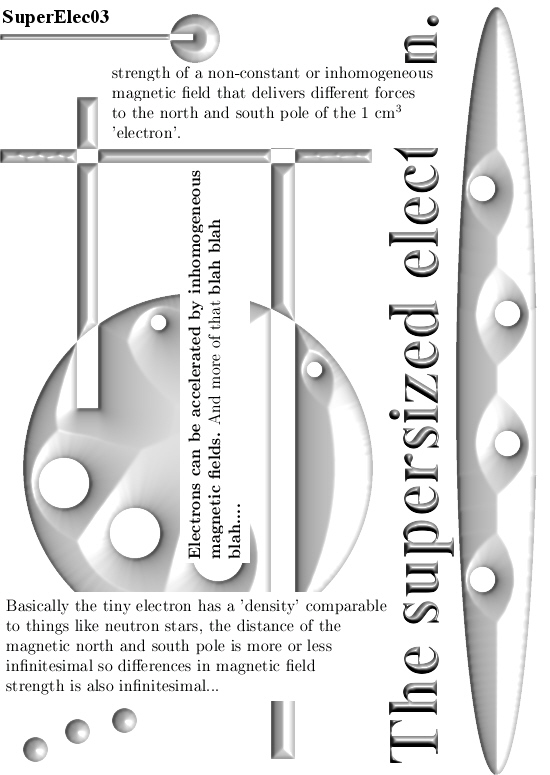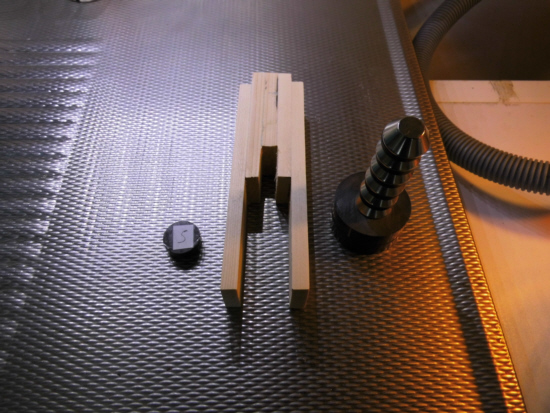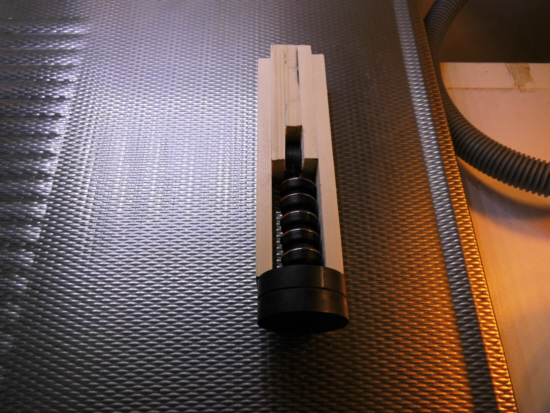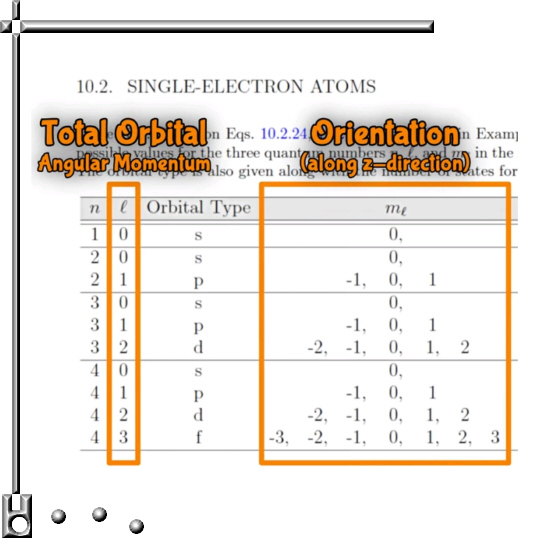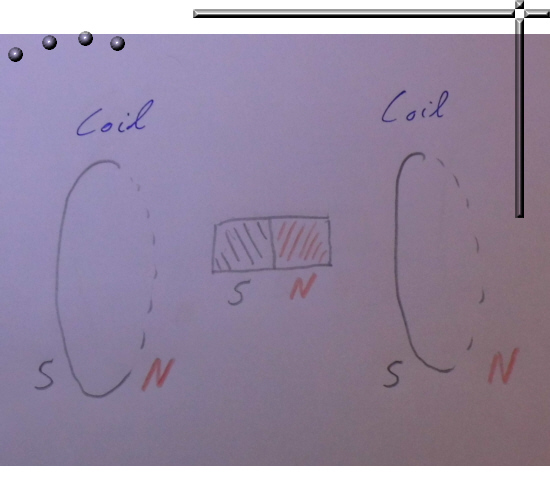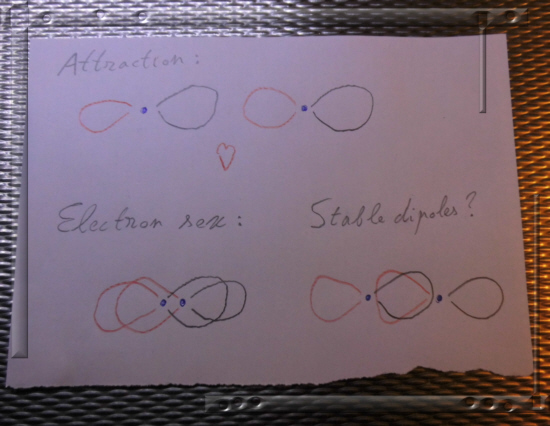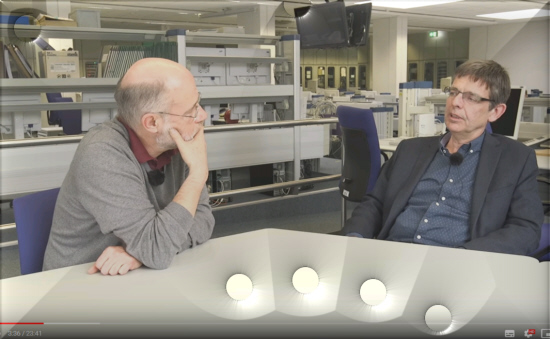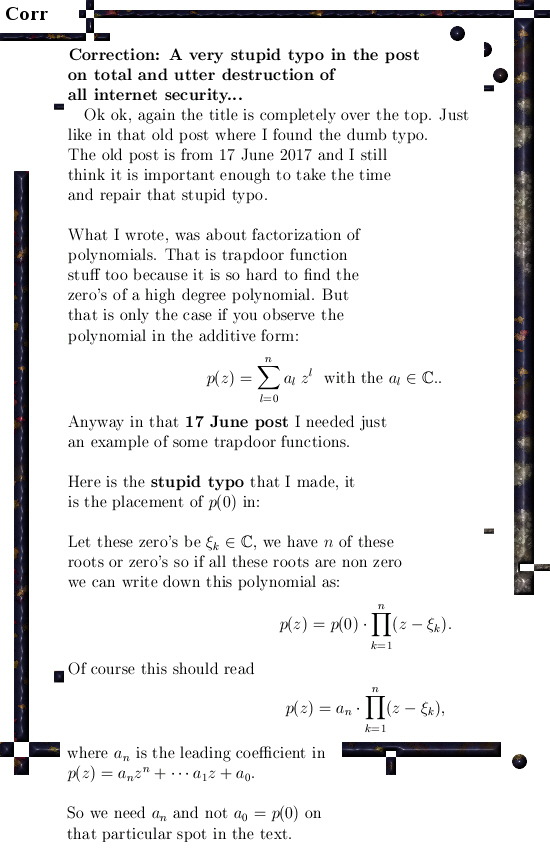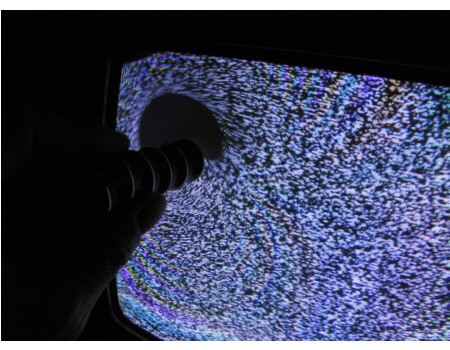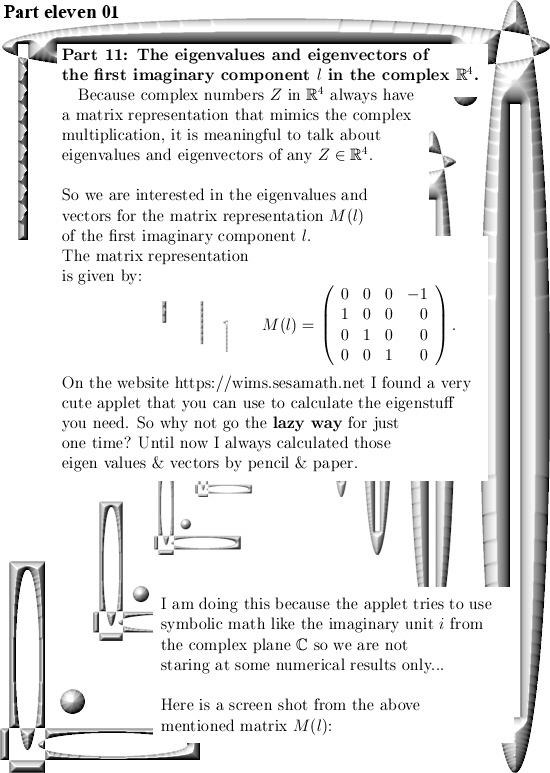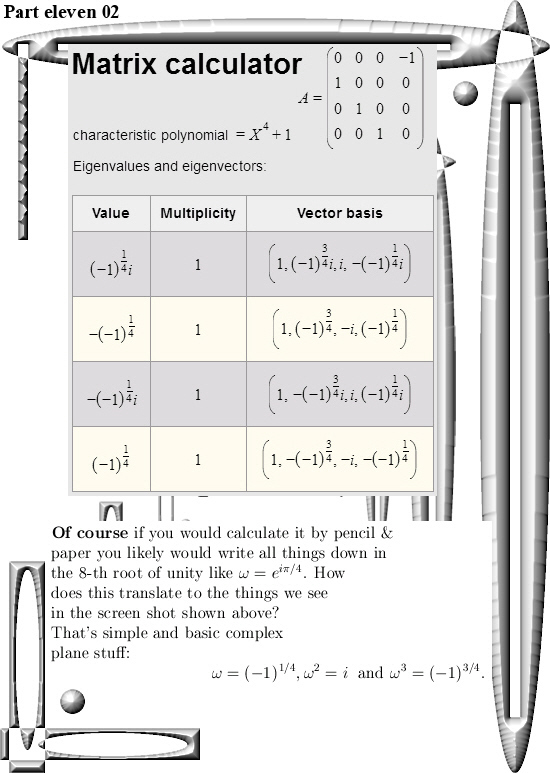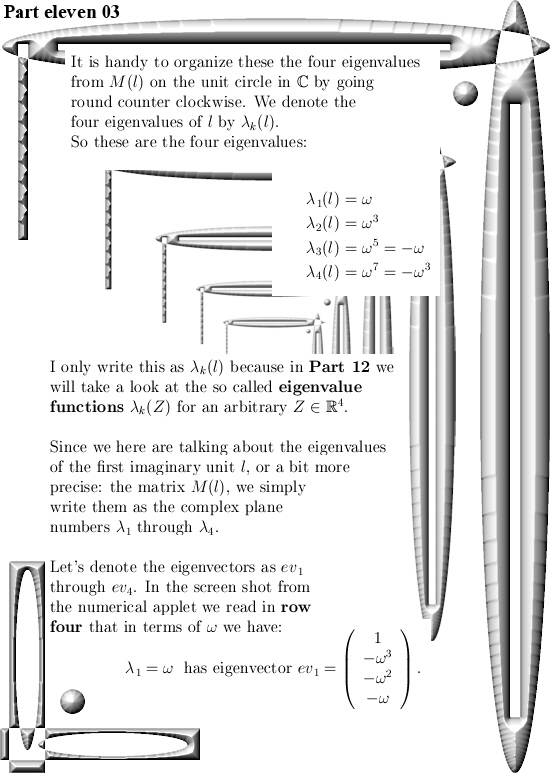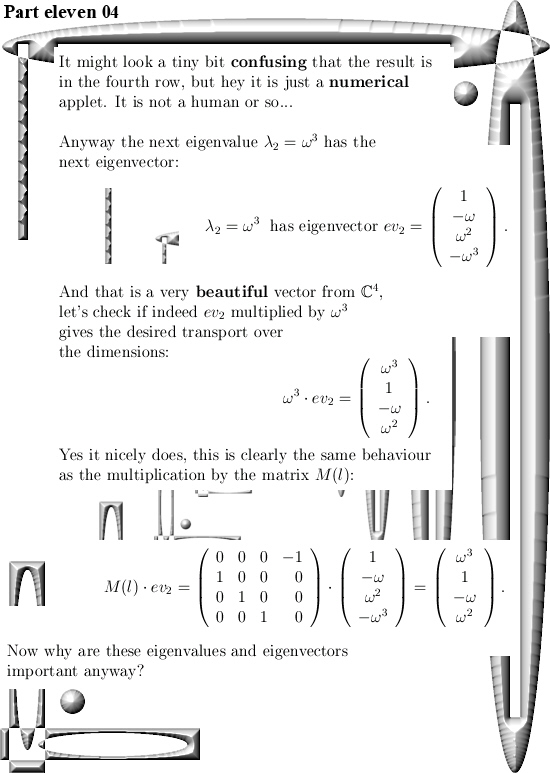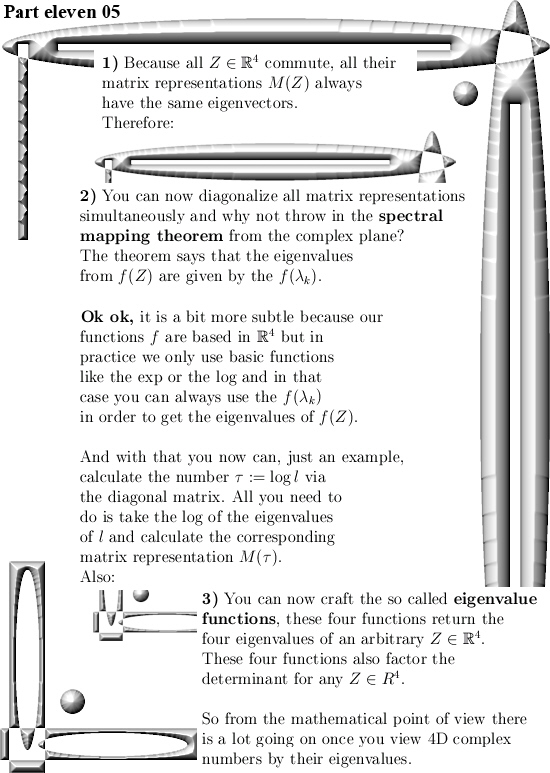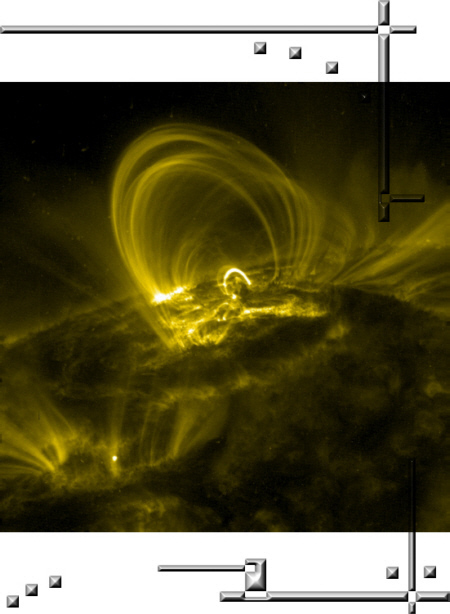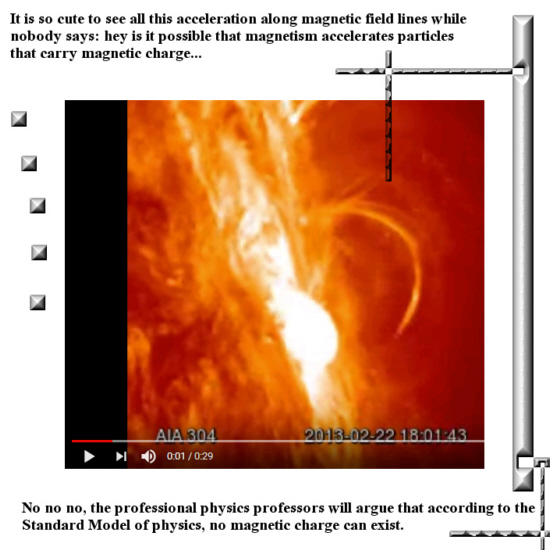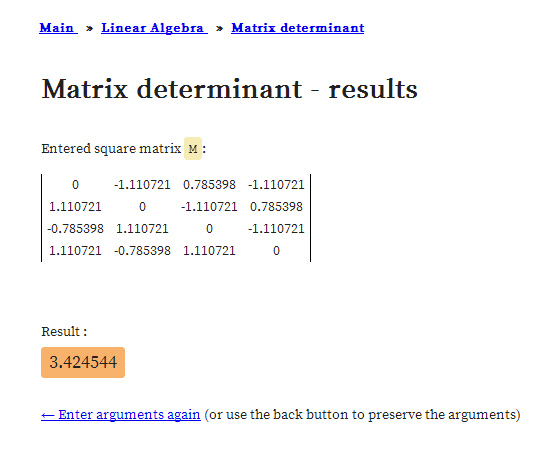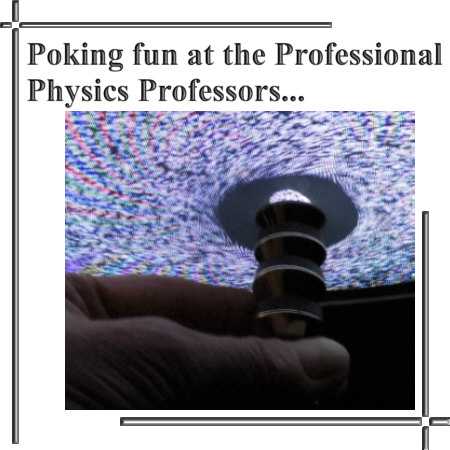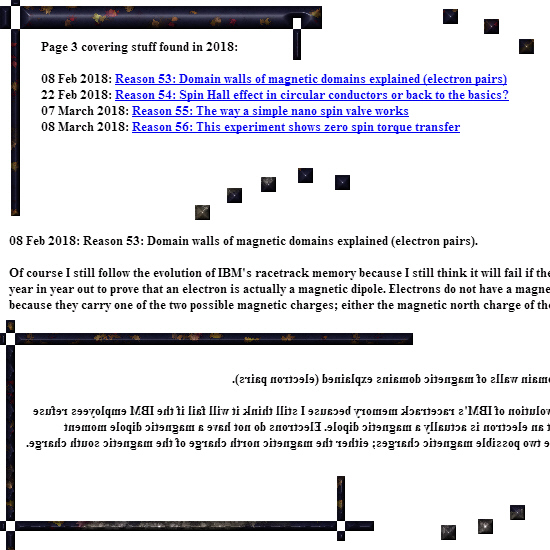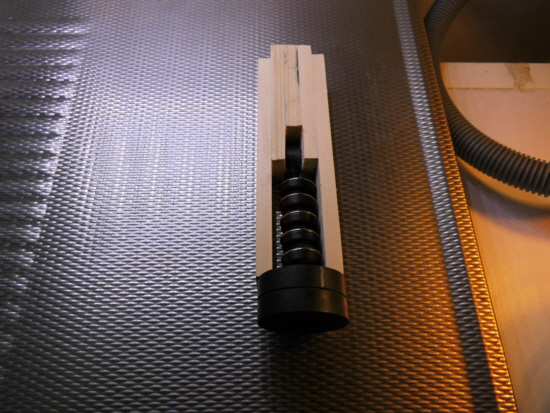Often you observe people stating that the magnetic dipole moment of the electron cannot be explained by actual spinning of the electron. Because for that to happen, even if all electric charge was located on the equator of that spinning electron, it had to spin faster than the speed of light.
If memory serves, it was also Mr. Pauli (from the Pauli matrices describing electron spin stuff) that calculated this. So finally I did that calculation for myself, it takes a few minutes to collect the constants needed like the electron mass (I always forget that number). But within two or three minutes I arrived at a result of something like 15c or 15 times the speed of light.
And I started writing the text for the five pictures below and I don’t trust it and are there no errors or so? Yes there is a dumb typo on my Casio fx-82 made; it was not 15c but 15 thousand c… May be I made more dumb errors I haven’t found yet but that is all rather irrelevant because the beef of this post is not if all details of the simple calculation are correct but much more about when you can apply math in physics and when not.
For example, it is very simple math to show that the electron must spin over the speed of light and you can conclude this is not going to happen. That is more or less an allowed way of applying math in physics. Now it is not a secret that I think it is impossible that electrons are magnetic dipoles and as such I often frown over the use of the Gauss law for magnetism. If we use the variant of the Gauss law that uses a closed surface (magnetic flux through a closed surface like a spere always adds up to zero) to an electron, can we conclude the electron is a magnetic dipole because the Gauss law says so? Of course not, you absolutely need experimental evidence for such claims and only after that you can say: The Gauss law for magnetism also holds for electrons.
Not to mention you can accelerate electrons via inhomogeneous magnetic fields, you never hear about a calculation for that kind of miracle…
Ok, enough of the blah blah blah. This post is five pictures long, all of the usual size 550×775 pixels.
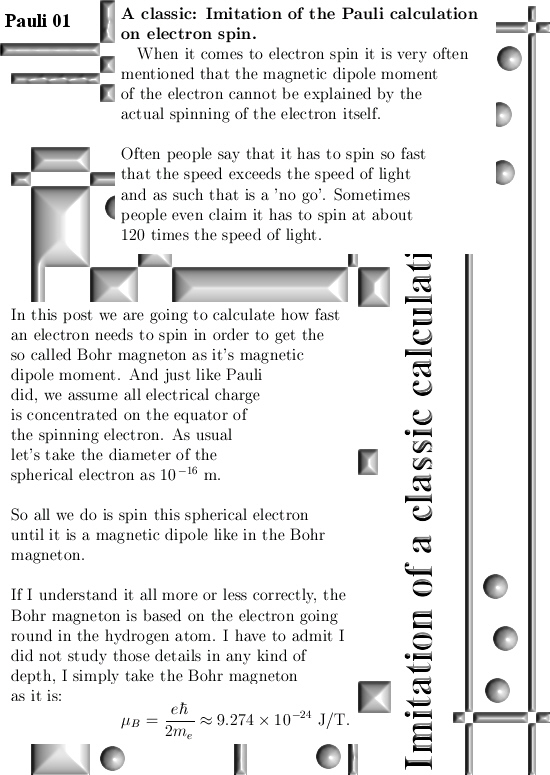
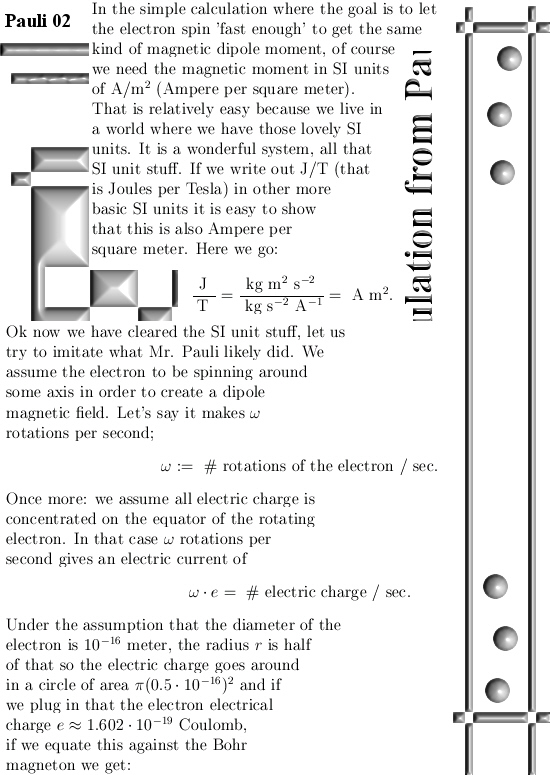
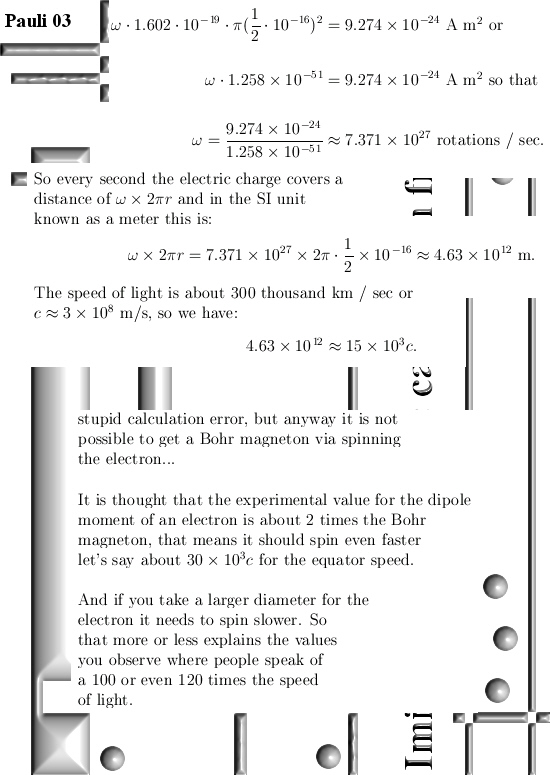
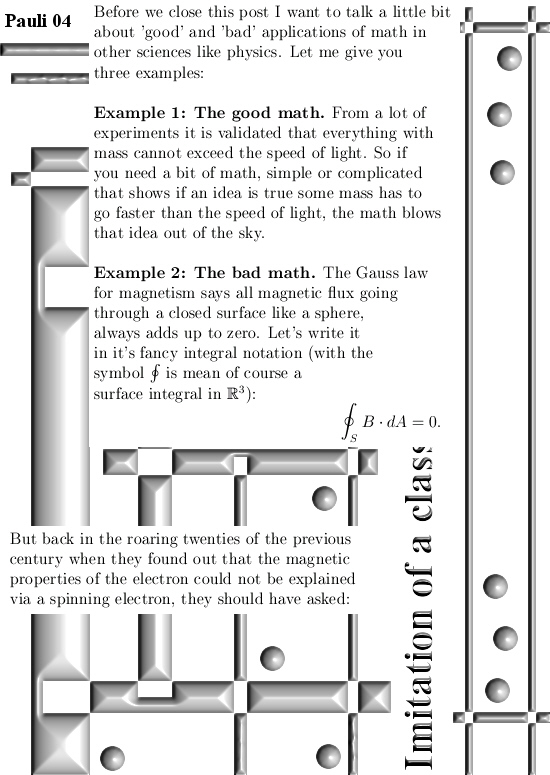
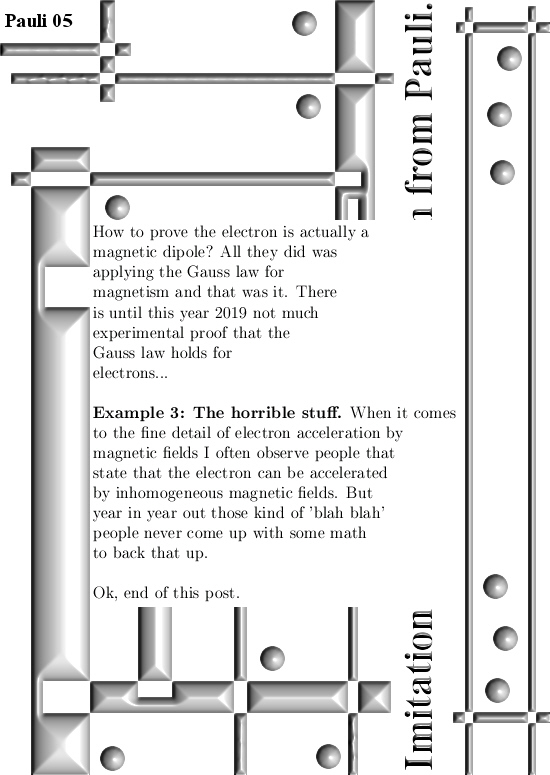
Ok, may be this post is just a giant mess if I read it again in a few years of time. But the huge number like 15 thousand times the speed of light can be tempered a little bit by using the so called ´Classical electron radius´ and that classical radius is far bigger compared to an electron diameter of 10^-16 meter. Here is one of those weird wiki’s:
Classical electron radius https://en.wikipedia.org/wiki/Classical_electron_radius
It looks like we are at the end of this post.
Added on 05 May 2019: A small appendix showing the difference in magnetic behavior of a single electron. I really do not know if it is possible the measure magnetic field strength of just a single electron. But at present day there are detectors that can detect just one photon, ok ok not any photon, it has to have enough energy to be detected. But anyway, if my view on electron magnetism is correct the strength should fall off in a 1/r^2 kind of law and if it is a magnetic dipole it is all very different.
Of course I cannot do such an experiment that shows how the magnetic field falls down, I do not know if such an experiment is possible. But if it is possible that experiment would likely make chopped meat of the idea the electrons are magnetic dipoles. The appendix is just one picture long, I had to enlarge it a little bit so it has size 550×850 pixels:

And now you are really at the end of this post.
No no, you are not at the end of this post because on 30 June I also place a funny video from the Youtube channel science asylum below. I would not hold my hand in the fire for the physics in it, after all I think that it is impossible for electrons to be magnetic dipoles. I think it is magnetic charge and as such it is reasonable to talk about spin 1 particles (so basically stuff with two unpaired electrons in it). A Stern Gerlach experiment done on a spin 1 particle gives results like in the next picture and once more this validates again that electron spin is only magnetic charge…
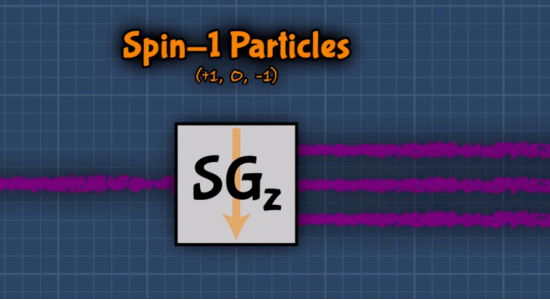
Here is the video from that funny Youtube channel:
https://www.youtube.com/watch?v=sB1EPGmpzyg
Ok, that was it.
